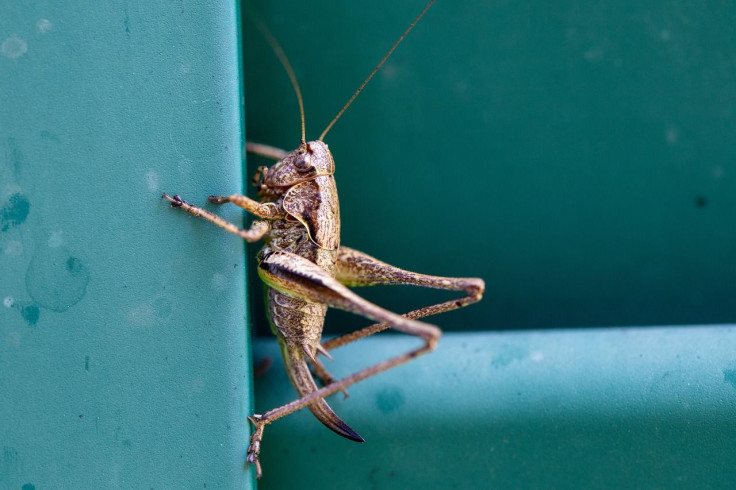Grasshoppers Invade Las Vegas As Swarms Show Up On Weather Radar

Grasshoppers have invaded Las Vegas. Their large hordes are causing alarm to residents and tricky radar readings for meteorologists.
In a news conference on Friday, state entomologist Jeff Knight said that the creatures raining down on Sin City’s streets and rooftops were likely due to the wet winter and spring. He said that the insects are relatively harmless, but will likely stay for a few more weeks before they head to migrate north.
The presence of these insects has nonetheless caused some issues. The National Weather Service has warned motorists that hordes of these bugs could be so thick at times they could affect road visibility.
The swarms are also showing up on weather radar.
The NWS said that grasshoppers were to blame for some recent false reports of rain.
In a tweet on Saturday, the NWS addressed queries about widespread radar returns over the past few nights.
_ Some of you have been asking about the widespread radar returns the past few nights in #Vegas. Radar analysis suggests most of these echoes are biological targets. This typically includes birds, bats, and bugs, and most likely in our case--> Grasshoppers. _ #VegasWeather pic.twitter.com/reQX7hJR7Y
— NWS Las Vegas (@NWSVegas) July 27, 2019
The weather service’s radar sends out pulses of microwave energy to detect things like raindrops, a plane or a swarm of insects. Meteorologist Alex Boothe explained they can supposedly differentiate biological objects like birds and insects from non-biological objects like rain and hail but the algorithm isn’t perfect.
“Last night, for example, it was showing some pretty high radar returns or echoes, and it was actually labeling them as large drops, raindrops,” Boothe said. “Based on there not being many clouds around, you can pretty much safely assume that it was probably biological.”
Some residents and visitors have been alarmed by the presence of the insects. Some posted videos of the bugs congregating around lights and raised concern that the insects could be dangerous.
Knight advised residents who want to keep the bugs from congregating to replace the outdoor white lightbulbs with orange or amber lights which do not attract the insects.
He nonetheless assured that the grasshoppers do not carry diseases. They do not bite and are not the species considered to be a problem. The entomologist said that the bugs are not locusts; they are the pallid-winged grasshoppers, which are a common desert species.





















